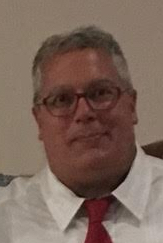A new illicit drug menace requires a new strategy
There’s a new demon to be reckoned with in drug abuse; a drug stronger than any other prescribed opiates and far more powerful than heroin. Over the last two years in particular, fentanyl, an FDA-approved, synthetic, short-acting opioid painkiller, emerged as a significant factor driving the increase in overdose deaths – grabbing the attention of the Drug Enforcement Agency, which issued a nationwide alert in late 2015, flagging fentanyl as a threat to American health and public safety.
Naloxone is an opioid blocking drug that can be administered in an emergency to abusers who have overdosed. It can be a potent weapon against heroin and fentanyl. It’s available in branded or generic formulations and can be used as a nasal spray or injection. It is vital that naloxone, sometimes known by its brand name, Narcan, be available to those likely to encounter addicts in an overdose situation, not just EMS and emergency-room personnel, but police and even ordinary individuals, if they live with or near addicts.
Fentanyl-implicated opioid overdose deaths are rising at an alarming rate, particularly in areas already most affected by the opioid abuse epidemic.
And while abuse of prescription fentanyl is of great concern, the creation of illicit fentanyl has led to a more complex hazard, where heroin is often laced with this knockoff drug. According to the National Institute of Drug Abuse, some opioid abusers, who often use heroin to satisfy their dependency or addiction, are unknowingly taking fentanyl in what they believe to be pure heroin – meaning they are at a higher risk of overdosing. This risk was made evident in a recent string of 2015 overdose events in Chicago, where there were 74 overdoses in 72 hours related to fentanyl-laced heroin.
Fentanyl and its copycats, the DEA estimates, are 50 to 100 times more potent than morphine and 30 to 50 times more potent than heroin.
Opioid overdose can occur very quickly, ultimately causing a person’s respiratory system to shut down. Fentanyl’s effect on respiration peaks in five to 15 minutes, a rapid onset compared to other prescription opiates like oxycodone, which has a median onset time of 32 minutes.
What this means is, if fentanyl users are to be saved from death in an overdose situation, an antagonist like naloxone must be administered quickly.
While the rise of opioid-related overdoses and death continues to spark discussion of cause, prevention and treatment, the introduction of fentanyl into the drug market has changed the landscape of opioid abuse and addiction – and with this change must come action.
First responders (EMTs, firefighters, police officers, etc.), medical professionals, caregivers, parents and friends have the ability to save the number of lives at stake in the “opiofentanyl” epidemic.
More people die of drug overdose than guns, cervical cancer, prostate cancer or pneumonia. More work needs to be done, and state and local lawmakers should take immediate action to get more naloxone in the hands of those who need it.
In the last year, I and many of my colleagues have trained over 200-300 law enforcement support staff, police and sheriffs in the use of naloxone. The solution to death by overdose is being able to mix public safety, criminal justice and public health. Likewise of the 175 hospitals in the state, not many have staff that advocate "Naloxone at home" and medication assisted treatment.
We need to demand more. Major healthcare systems and hospitals have departments of infectious disease or infection control but departments of addiction medicine are rare. Institutional stigma and communal denial continue.
We need to reduce stigma and rebalance the gap between opioid addiction and capacity for treatment. Until we can find solutions addressing initial opioid abuse, naloxone grows ever more important to the immediate battle against opioid overdose.
We have the ability to help save lives now. 50,000 Americans per year do not have to die.
Naloxone is the most important medication in America today.
See what new members are saying about why they donated to Bridge Michigan:
- “In order for this information to be accurate and unbiased it must be underwritten by its readers, not by special interests.” - Larry S.
- “Not many other media sources report on the topics Bridge does.” - Susan B.
- “Your journalism is outstanding and rare these days.” - Mark S.
If you want to ensure the future of nonpartisan, nonprofit Michigan journalism, please become a member today. You, too, will be asked why you donated and maybe we'll feature your quote next time!


 Dr. William Morrone is medical director of Holy Cross Children’s Services and Recovery Pathways in Bay City, Corunna and Ortonville.
Dr. William Morrone is medical director of Holy Cross Children’s Services and Recovery Pathways in Bay City, Corunna and Ortonville.